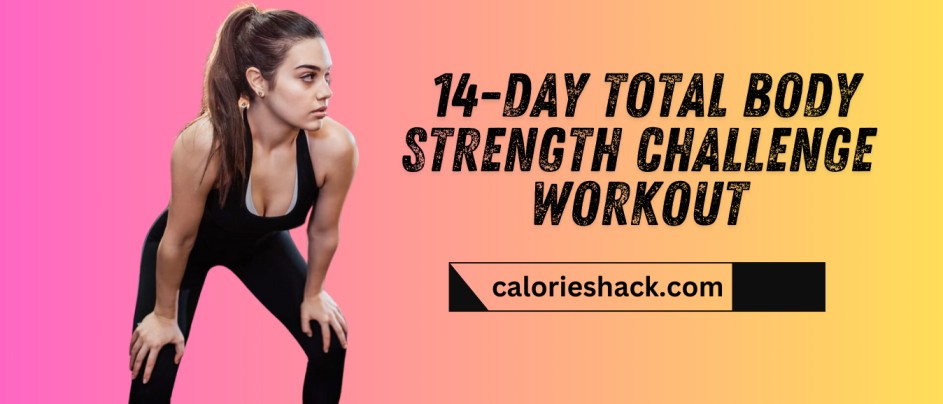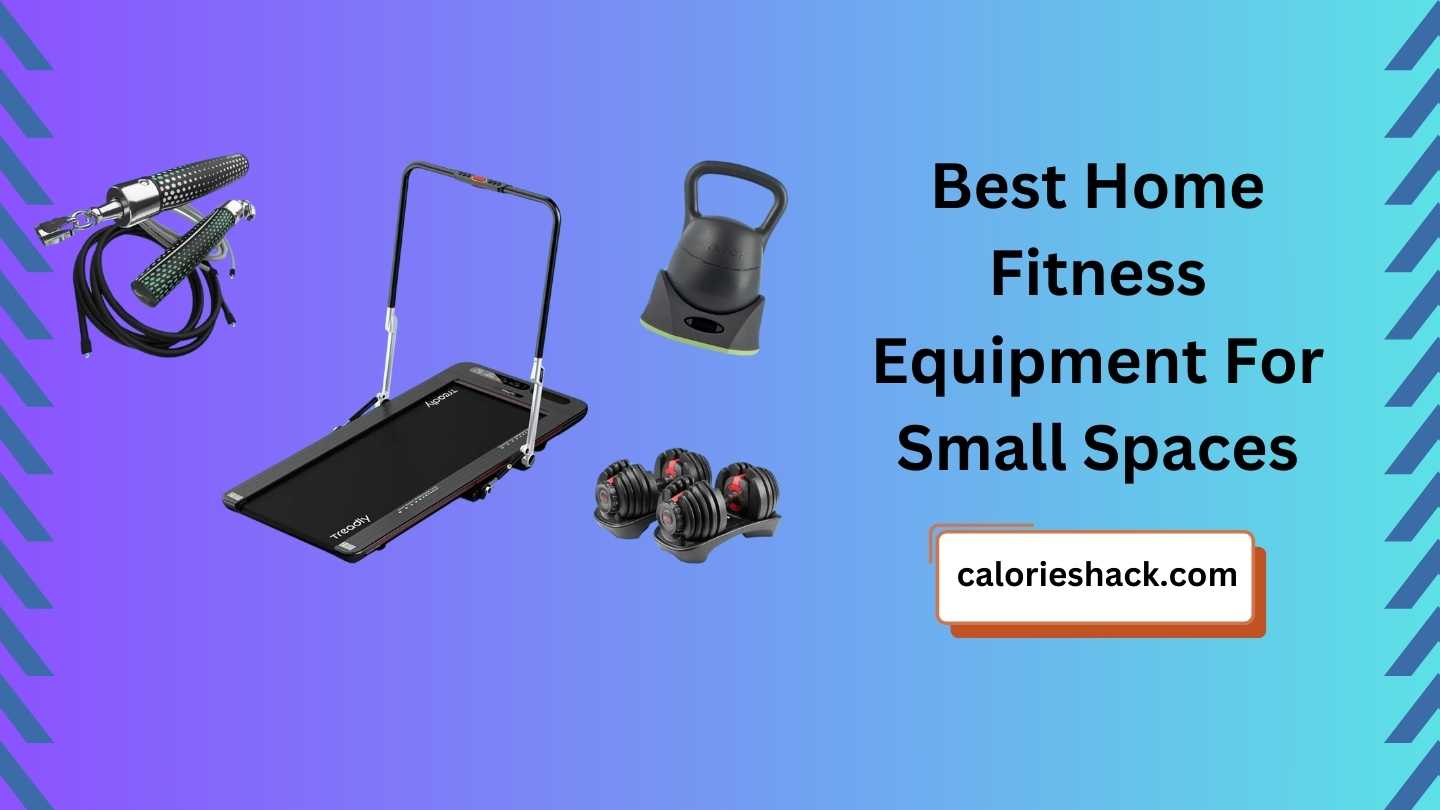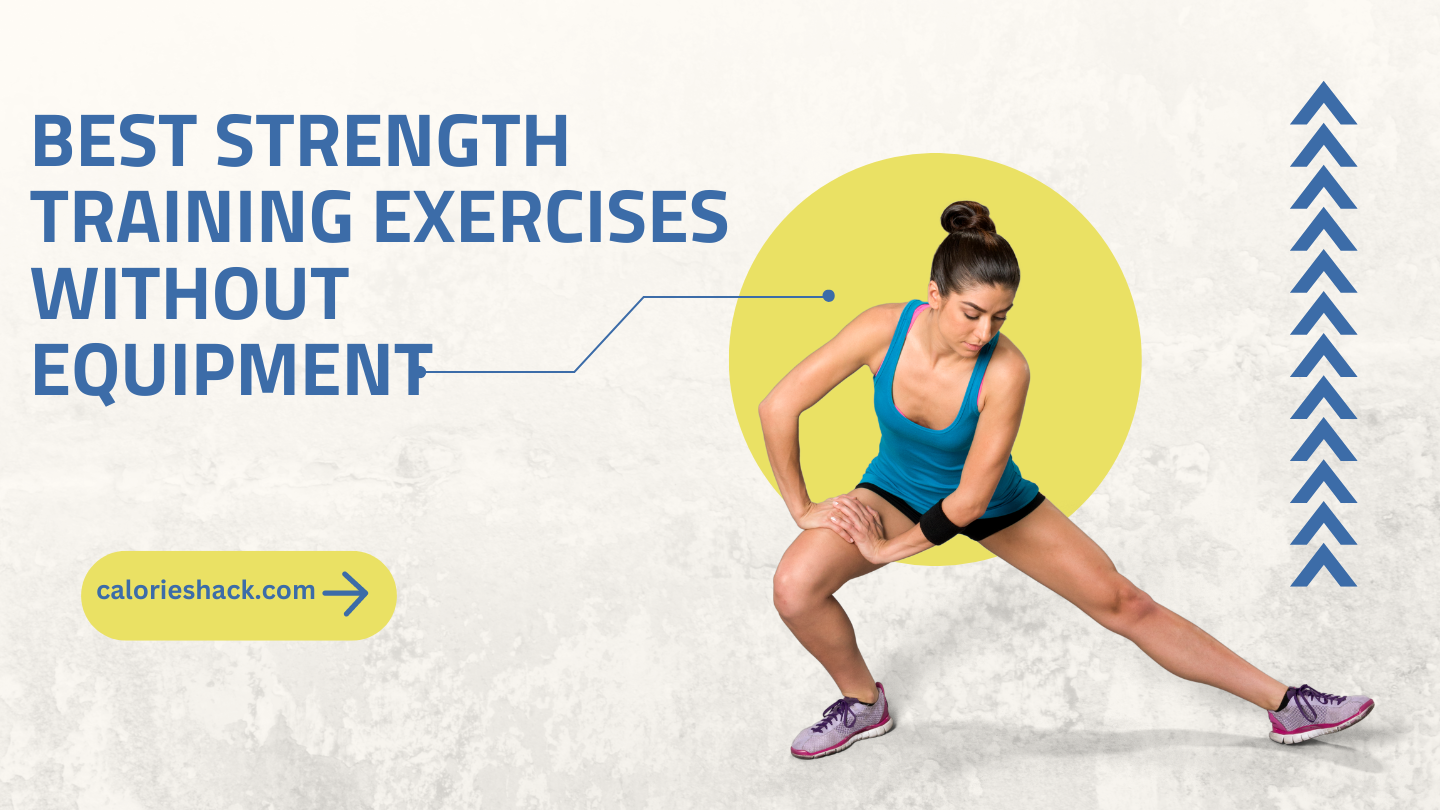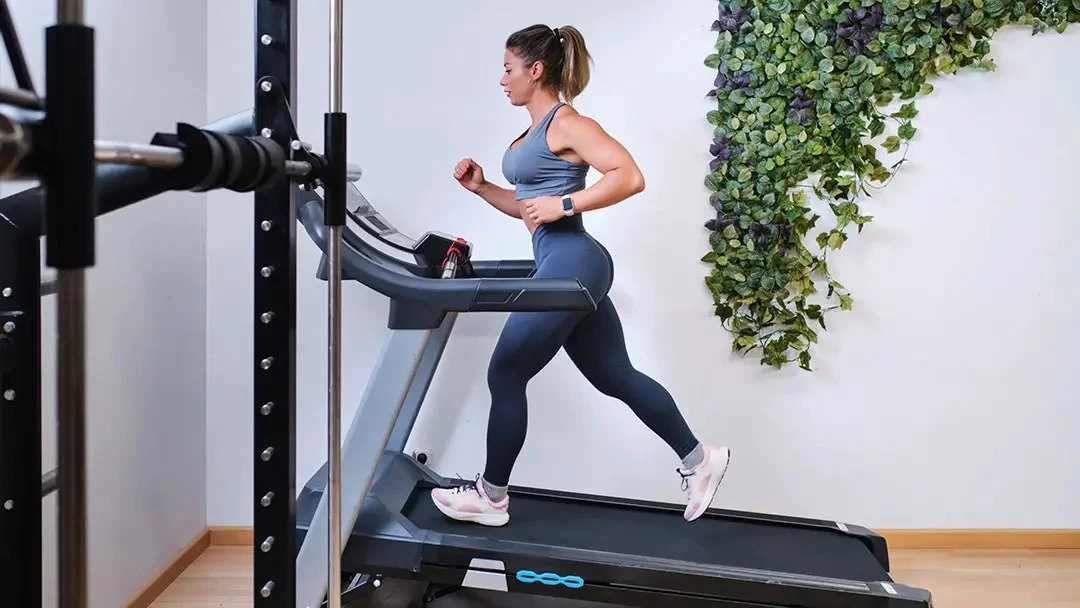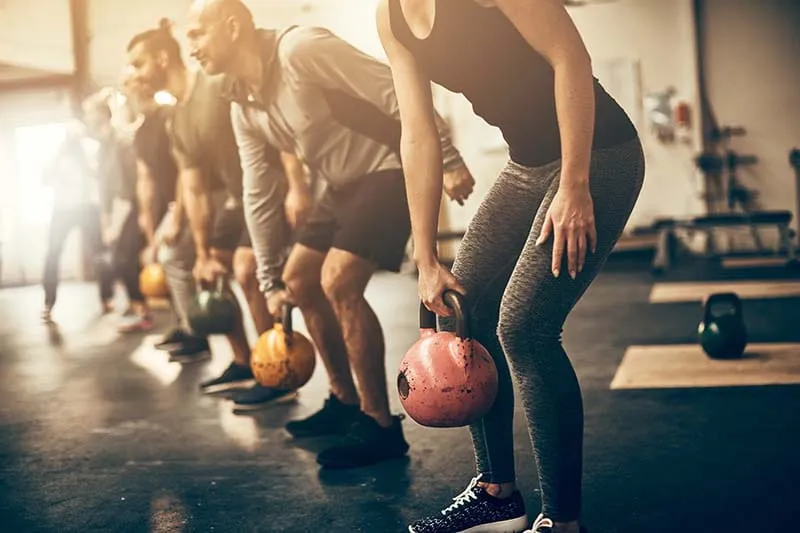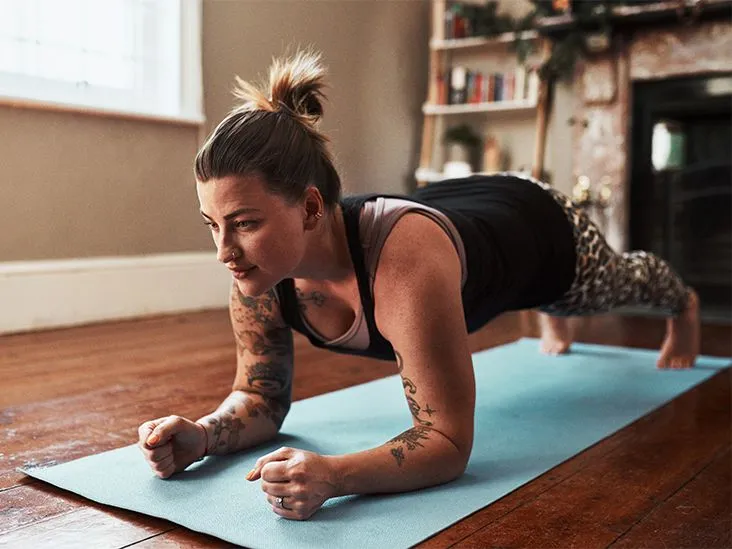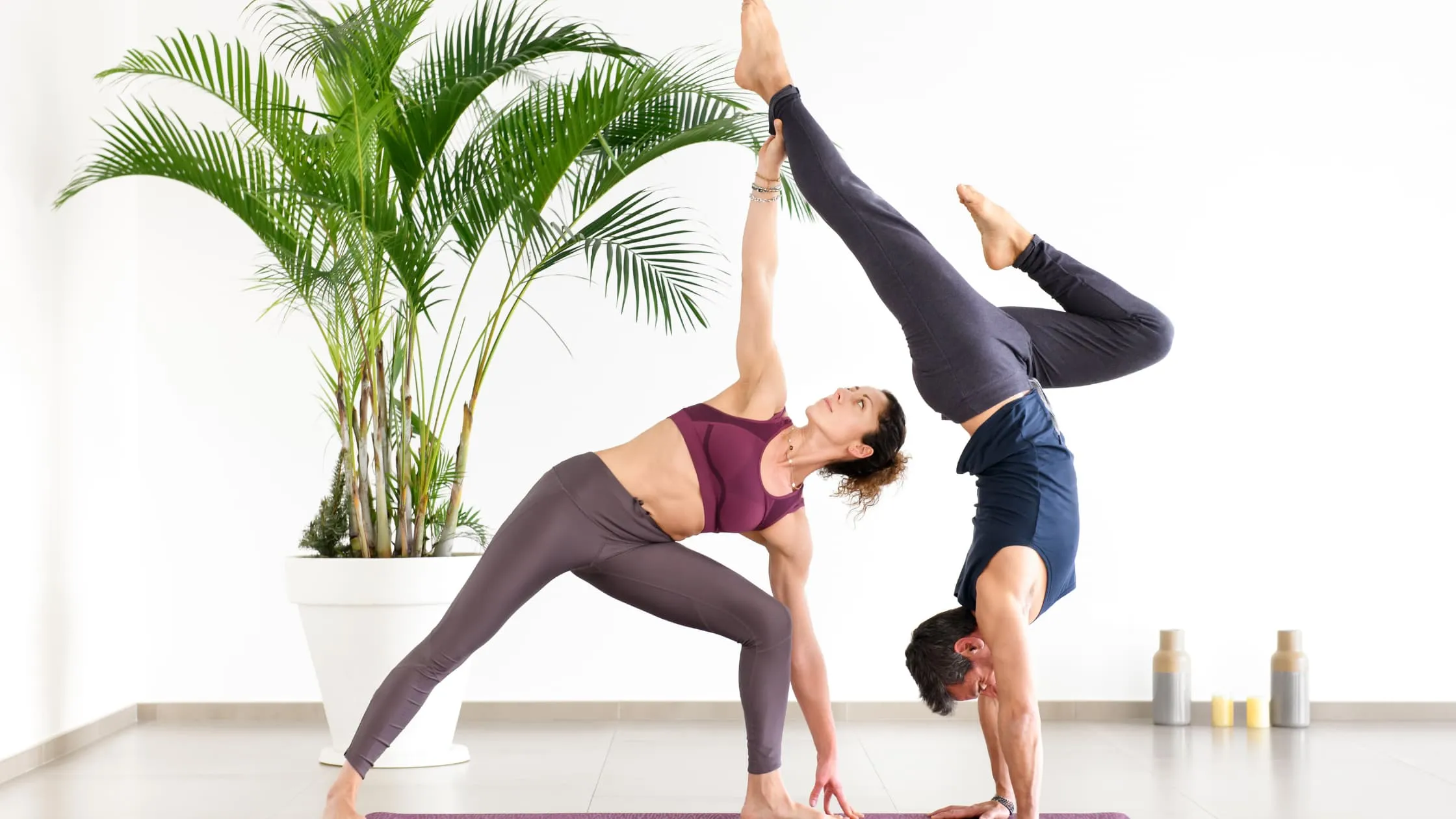Get a slim, trim, and powerful core with the ideal core-strengthening workout! If you're confused between Crunches Vs. Sit-Ups for a lean, sculpted core, you've come to the correct spot. Although they are commonly used interchangeably in strength training, they are fundamentally distinct. Sit-ups and crunches may seem similar, but they vary after you go beyond the beginning posture. Nonetheless, they are two of the most common abdominal workouts, and they function to strengthen the core in distinct ways. Both exercises are popular among fitness lovers because they build core strength, which is important for power, stability, and speed. It's difficult to decide which is more effective when it comes to crunches and sit-ups. Scroll down to learn more about the differences between them, as well as their advantages and disadvantages!
What is a sit-up?
Sit-ups improve the abdominal muscles and tone the core. They entail laying on your back on the floor and elevating your torso. Sit-ups offer a larger range of motion than crunches, making them more effective in targeting several muscles.
Sit-ups primarily target the rectus abdominis muscles, which run vertically across the front of the torso (1). These exercises target the transverse and oblique abdominal muscles, promoting sculpted abs. Sit-ups also aid with posture by training the hip flexors, which connect the thighs to the lower back and gluteal muscles. Sit-ups are simple to execute if you use the proper methods.
Recommended to read:
- How To Do A Push-Up (And Why They’re So Good
- 5 Potential Health Benefits Of Resistance Band Training
- High-Intensity Interval Training (HIIT): Health Benefits
- How Indoor Rowing Helped Me Maintain A 75-Pound Weight Loss
How to do sit-ups
For proper sit-ups, follow these steps:
- Lie on your back on the floor. Bend your legs at the knees and maintain your feet flat on the ground.
- For added support, tuck your feet beneath any object or bench.
- Place your hands behind your head or across your chest.
- Engage your abs, breath, and gently raise your back off the floor.
- Move your body forward so that your chest is inches from your thighs.
- Inhale and return your body to its starting posture.
- Do one set of ten repetitions.
Crunches should always be performed gently to properly stimulate your abs under increased strain.
What are Crunches?
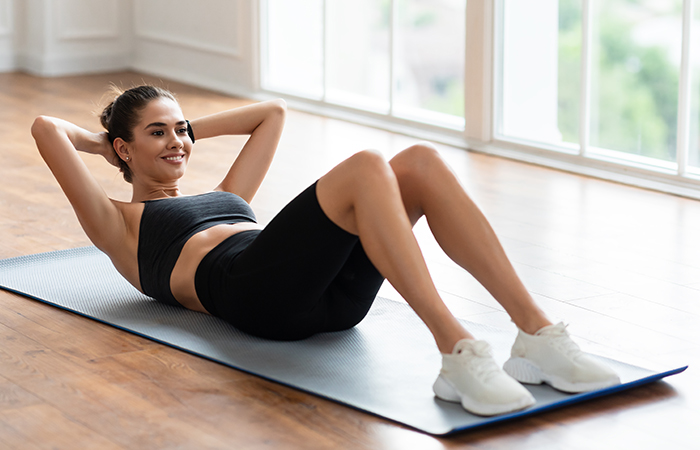
Crunches are a traditional core workout that targets the abdominal muscles. They have a lower range of motion than sit-ups. A crunch, also known as a half sit-up, is performed with the lower half of the body on the floor.
Crunches strengthen the rectus abdominis and obliques, resulting in the desired six-pack abs. Crunches also put less pressure on the spine and are ideal for those looking to target their abs. Here's how to perform crunches correctly.
Personal Trainer Hannah Shine recommends crunches for anyone looking to target their abs. Here's how to perform them right.
How to Do Crunches
Follow these instructions to do simple crunches correctly:
- Lie down on the floor, knees bent, feet shoulder-width apart.
- Put your hands behind your head.
- Contract your core muscles, then gently lift your head and shoulders off the floor. Exhale as you ascend.
- Hold for one second and inhale as you return to the starting position.
- Do two sets of ten repetitions.
Crunches may also be done in a variety of ways, including side-oblique, bicycle, and toe-tap. There are many varieties of crunches you may attempt, including:
Basic Crunch: lie on your back with your legs bent and hands behind your head. Lift your upper body off the ground.
Reverse Crunch: Lift your legs and pelvis off the ground to target your lower abs.
Oblique Crunch: Twist your body to target the oblique muscles on the sides of your belly.
Bicycle Crunch: mimics cycling and works both upper and lower abs.
Vertical Leg Crunch: Vertical leg crunches work both lower and upper abdominal muscles.
Long Arm Crunch: Extend your arms to target the upper abs.
Plank With Knee-To-Elbow: Combines plank with knee-to-elbow exercises for a complete core workout.
Side Plank Crunch: Combines a side plank with a crunch to target the obliques.
Depending on your fitness objectives, crunches and sit-ups are both effective belly toning exercises. However, both have benefits and drawbacks. Read on to find out more about them.
Read also:
- Just 15 Minutes Of Exercise Can Help Counteract The Health
- A 15-MINUTE STRETCH TO START YOUR DAY
- WHAT DOES BEING PHYSICALLY FIT MEAN?
- WHAT ARE THE MENTAL AND PHYSICAL HEALTH BENEFITS OF EXERCISE?
Pros and Cons of Sit-ups and Crunches
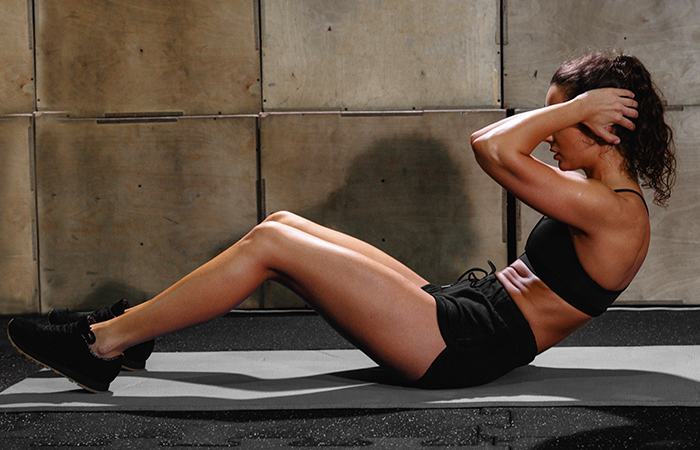
Pros of Sit-ups
1. Engages many muscles
Sit-ups develop the abdominal muscles by specifically targeting them and exercising them from various angles.These exercises target many muscular groups, including the abdominals, hip flexors, lower back, chest, and neck.
2. May increase core strength.
Sit-ups tighten and tone the abdominal muscles, thus including them into your training program may assist build core muscles. A strong core is associated with enhanced endurance and performance in athletes (2). Sit-ups also make it simpler to do daily tasks.
3. May improve posture.
A strong core helps keep the spine, shoulders, and hips aligned. Sit-ups enhance posture by lowering pain and stress while increasing energy levels.
4. Improves flexibility and stability.
Sit-ups reduce stiffness by releasing tension and tightness in the spine while enhancing mobility and flexibility.A strong core also enhances body balance, keeping you steady and reducing your risk of falling and injuring yourself.
5. May improve pulmonary function.
Core exercises, such as sit-ups, differ from typical workouts in that they emphasize diaphragmatic breathing. This may benefit pulmonary function and respiratory health.
Do not adopt a forward head position or twist your neck when doing sit-ups, since this might cause muscular tension in your neck.
Sit-ups offer several benefits. However, before you begin, take in mind the risks linked with the workout!!
Cons of Sit-Ups: Can cause spinal injuries.
It is difficult to avoid rounding of the back when lifting your body for sit-ups, which raises the risk of back injury.It adds strain to the lumbar vertebrae, increasing the likelihood of spinal injury.Furthermore, repetitive flexion might lead to disc rupture or bulging. Consult a doctor if you have a history of injuries before doing sit-ups.
- May Injure the Neck
Lifting your head wrongly with your shoulders off the ground puts your neck at serious danger of damage. It is recommended that you position your hands behind your head to support the cervical spine and minimize pain. The safest approach to perform this is as part of a gym program, supervised by an instructor.
Continue reading to discover about the advantages and disadvantages of crunches.
Pros of Crunches: - Helps define the abs.
Crunches are ideal for working solely the abdominal muscles and developing finely sculpted upper abs. They are also useful when aiming for many sets of the same exercise.
- Reduces strain on the back
Crunches have a restricted range of motion, which reduces the chance of damage. Furthermore, the minimum movement workout helps to strengthen the core without placing too much pressure on the back.
- Easy to master.
Crunches are a beginner-friendly and simple workout that involves elevating the head and shoulders off the ground.This bodyweight workout doesn't need any gym equipment.
- May improve endurance.
Crunches are excellent for building abdominal endurance. A research indicated that doing crunches at least once a week enhanced abdominal endurance in untrained teenagers (4).
While crunches are effective for developing sculpted ab muscles, they do have some drawbacks.
Check the section below to find out if sit-ups or crunches are superior!
Also read:
- Don’t Do Knee Push-Ups — Try These Modifications Instead
- What To Wear For A Barre Workout
- Deload Week: How Slowing Down Can Speed Up Your Results
- The Fourth Macro?! How Many Calories Are In Alcohol
Sit-ups vs. Crunches: Which is the Better Workout?

Both sit-ups and crunches work on the core; however, sit-ups target various muscle groups, including hip flexors, and crunches isolate abdominal muscles, so preferentially focusing on the core. In this discussion, the winner is totally dependent on you and your objectives.If you want to concentrate on a different set of muscles, try sit-ups, and if you want sculpted abs, perform crunches.
Crunches have also been shown to put less pressure on the spinal cord, while sit-ups involve flexing, which increases the chance of back or neck injury. Sit-ups have a greater impact on the lower back since they rely heavily on the hip flexor muscle group. Sit-ups need the aid of another person, an anchor, or a support for successful completion, while crunches may be performed alone. Crunches are also a simpler kind of core exercise for beginners, while sit-ups are somewhat more difficult.
Stella Baird, a lifestyle blogger, detailed her exercise regimen in one of her blog entries. She remarked, "Maybe this makes me crazy, but I like sit-ups! I simply think they're so entertaining. I have a love-hate relationship with crunches, yet they are incredibly good for your core (i).
Infographic: Key Differences Between Sit-Ups and Crunches
Sit-ups and crunches are core-strengthening workouts that target the abdominal muscles. They aid in the development of flexibility, balance, and core strength, as well as the formation of the ideal sculpted abdominals. As described in the post, each has advantages and disadvantages; nevertheless, to learn more about the key distinctions between sit-ups and crunches, see the infographic below!



